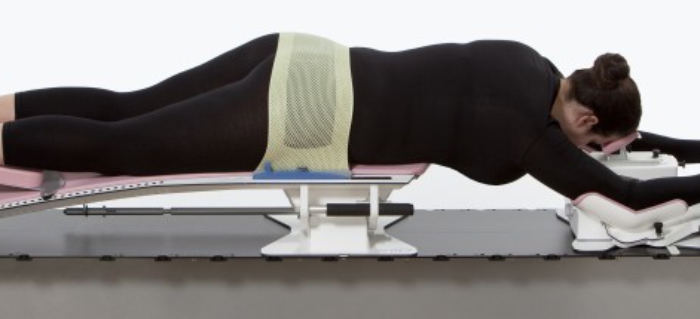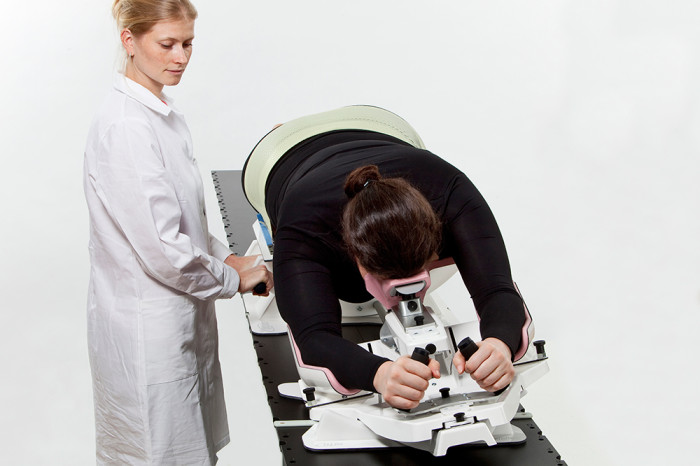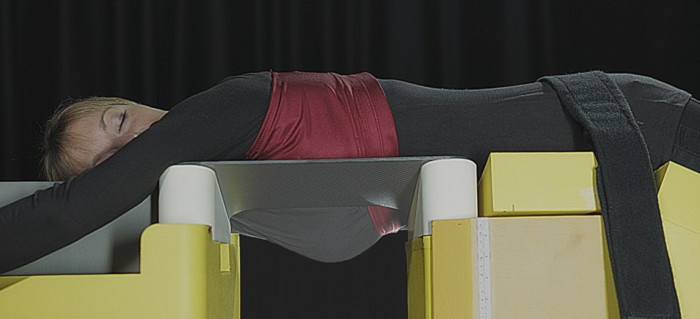
Sagittilt: Orfit’s highly reproducible, patient friendly and heart-sparing prone breast solution
Breast cancer radiotherapy might involve some radiation exposure of the normal tissues within the thorax, including the heart and lungs. This is associated with secondary lung cancer and mortality and morbidity rates for women with left-sided breast cancer due to ischemic heart disease [1]. Darby et al demonstrated that for every 1 Gy increase in mean heart dose, the relative risk of a major coronary event increased by 7.4% [2]. Also the dose on the left anterior descending artery (LAD) may be impactful in the genesis of cardiac toxicity. Given the rising incidence of breast cancer, the implementation of heart-sparing breast cancer techniques is substantial. There are several cardiac sparing techniques available, including the coordination of treatment delivery with respiration (breath-hold or respiratory gating), treatment in a prone position, IMRT, PBRT and partial breast irradiation [3]. A very promising solution that has already been shown to be superior for heart-sparing, mainly in patients with large breast volumes, is the prone position. Moreover, when prone positioning is combined with deep inspiration breath hold, the heart dose, even with smaller cup sizes, is reduced while maintaining the dose reduction to the lungs [4].
Several prone systems are used in clinical practice. However, data on the reproducibility, comfort and ease of use is lacking. Therefore, the available data are rather addressed to the prone position itself than to the immobilization system used.
Recently, Lakosi et al investigated the patient and staff satisfaction, treatment time and treatment reproducibility of the Orfit Sagittilt® prone breast solution. Prone breast treatments are often considered as less comfortable and also less reproducible compared to the supine position. However, they found that Sagittilt® is feasible and well-tolerated by patients, acceptable to radiographers and reasonable in terms of patient treatment times. Set-up errors were comparable with other prone systems. The full article can be found here.

With Sagittilt, Orfit tried to translate the aspects that make the supine position comfortable into a prone immobilization device. To increase the comfort and reproducibility, the position of the arms, legs and head is adjustable to suit the patient’s anatomy and every possible position is indexed. Sagittilt is unique in that the patient can be tilted to let the ipsi-lateral breast fall deeper into the cut-out and further away from the organs at risk such as the heart and lung. For increased precision and safety when tilting the system, Sagittilt should be used in combination with a thermoplastic hip mask.
More information about the Sagittilt prone breast solution can be found here.

[1] Taylor CW, Kirby AM. Cardiac side-effects from breast cancer radiotherapy. J Clin Oncol 2015; 27:621-629.
[2] Darby SC, Ewertz M, McGale P, et al. Risk of ischemic heart disease in women after radiotherapy for breast cancer. N Engl J Med. 2013; 368(11):987-998.
[3] Shah C, Badiyan S, Berry S, et al. Cardiac dose sparing and avoidance techniques in breast cancer radiotherapy. Radiother Oncol. 2014; 112(1):9-16.
[4] Mulliez T, Veldeman L, Speleers B, Mahjoubi K, Remouchamps V, Van Greveling A, et al. Heart dose reduction by prone deep inspiration breath-hold in left-sided breast irradiation. Radiother Oncol 2015; 114:79-87.


